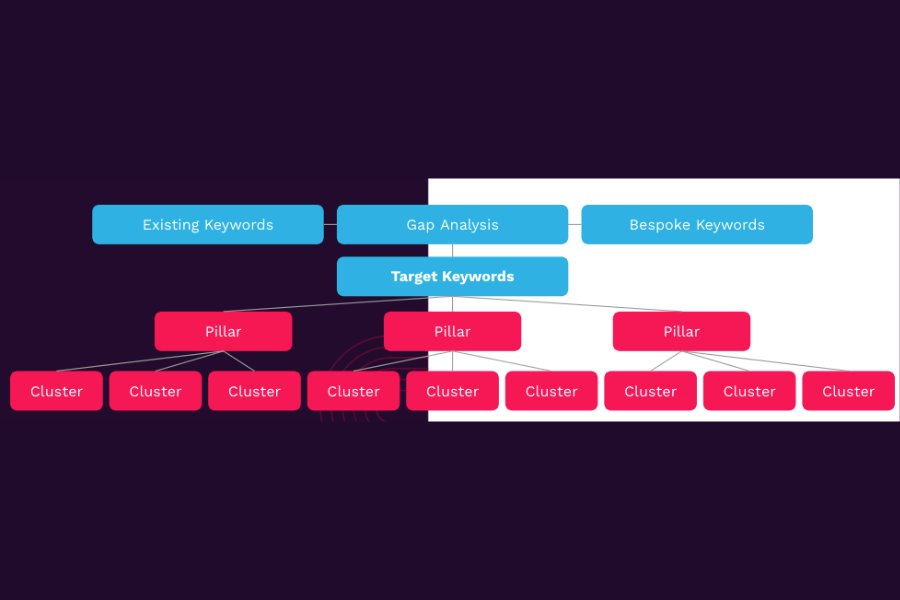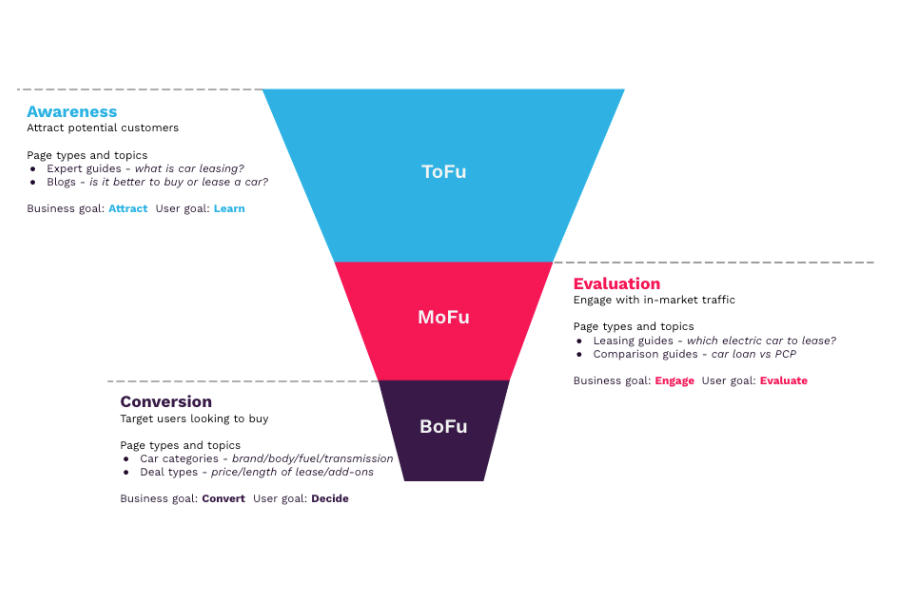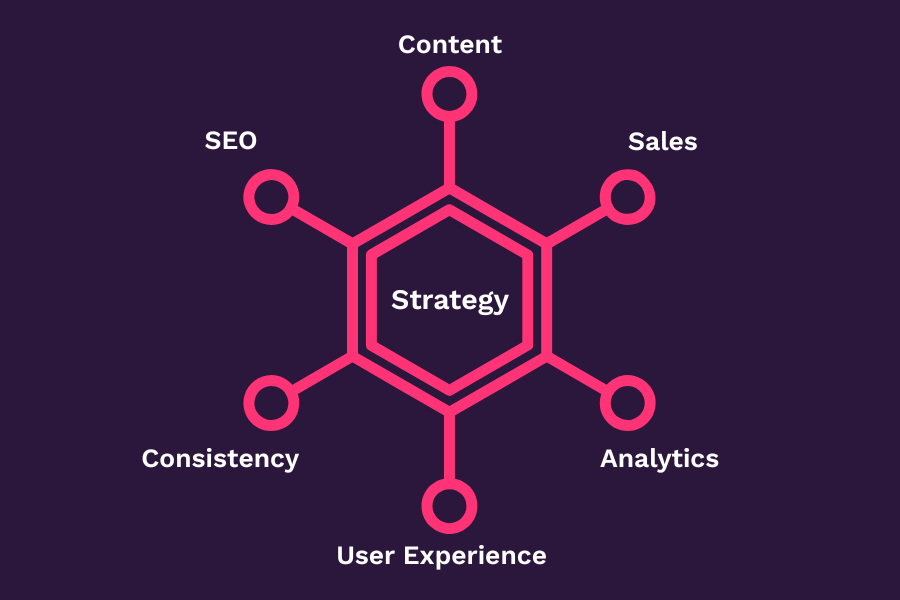Scaling SaaS marketing isn’t about flooding the internet with more content or pouring more money into ads. It’s about building a performance engine that mirrors how your buyers search, compare, and convert, especially in crowded B2B categories.
For UK-based SaaS and service brands pulling between £2M and £50M in revenue, the challenge usually isn’t visibility. It’s consistency. Consistent channels. Consistent messaging. Consistent outcomes.
This piece is built for teams who want SaaS marketing that drives pipeline, not just pageviews. You’ll find a practical framework that links intent, structure, SEO, and analytics to real business results. No fluff. No hacks. Just a strategy that scales.
Why Most SaaS Marketing Fails to Scale (And How to Fix It)
Most SaaS marketing doesn’t fail because of a bad strategy. It fails because there isn’t one.
Instead, there’s a patchwork of disconnected tactics. A few keyword-stuffed blog posts. Some underperforming paid search campaigns. A generic lead magnet is buried in the footer. These don’t scale. They stall.
For growth-stage B2B SaaS brands, the issue isn’t a lack of effort. It’s that each channel pulls in a different direction. SEO says, “create value.” Paid media says “bid higher.” Sales says, “We need better leads.” With no shared plan or metrics, momentum fizzles.
Fixing this means treating SaaS marketing as a system, not a set of tasks. The structure needs to reflect how your audience searches, evaluates, and buys. That starts with intent, long before keywords or campaigns come into play.
Building a SaaS Marketing Engine: Start With Intent, Not Tactics
Strong SaaS marketing doesn’t start with blog titles or campaign briefs. It starts by understanding what your buyers are searching for, and why.
Keyword research and intent mapping go well beyond volume and difficulty scores. They reveal how your audience thinks. What triggers the search? What job are they trying to get done? What decision stage are they in? These insights are the foundation for a scalable content strategy.
Too often, teams treat keyword research like a box to tick. They pull a list from Ahrefs or Semrush, sort by volume, and call it a day. But this misses the nuance. High-intent, mid-volume keywords aligned to real buyer pain points often drive the highest ROI.
The goal is to build content around these intent signals. Not just individual posts, but thematic structures that match how your ICP moves from awareness to evaluation. This is where keyword intent shapes everything from site architecture to CTA strategy.
Before any wireframe, content brief, or ad creative gets built, map the buyer journey and the language they use to navigate it. That’s what turns SaaS marketing from reactive to revenue-focused.

Architecting SEO for Growth: Structure Over Hacks
Publishing the odd blog post here and there might get you indexed. But it won’t make your SaaS brand visible where it matters: at the right stage of the buyer journey, for the right kind of intent.
To scale, you need structure. Not just in your CMS, but in how your content reflects buyer needs. That’s where topic cluster development becomes essential. It is not a quick SEO fix. It is a strategic method of organising content in a way that mirrors how your audience searches, learns, and makes decisions.
At the centre is your pillar page, which should be broad, informative, and aligned to commercial value. Around it sit supporting articles that explore specific pain points, objections, or use cases. Each one should be internally linked, signalling depth and relevance to both search engines and readers.
This model is particularly effective for B2B SaaS brands with longer buying cycles. You are not simply chasing traffic. You are creating pathways that guide prospects through awareness and consideration, while steadily positioning your solution as the right fit.
If your blog still reads like a list of disconnected posts, it is time to rebuild. Topic clusters provide more than search visibility. They create a durable, scalable structure that compounds over time.

Technical SEO for SaaS Platforms: What Actually Matters
A well-designed SaaS platform might impress prospects, but it often fails the fundamentals of search visibility. Technical SEO for SaaS is where most performance strategies either quietly succeed or quietly fall apart.
It starts with infrastructure. Your site needs to load quickly, respond smoothly, and serve clean, crawlable code. These aren’t bonus points, they are the baseline. Google’s Core Web Vitals reflect that reality, focusing on real-world speed, responsiveness, and layout stability. If users hesitate or bounce before the page settles, your rankings take the hit.
Yet many teams treat technical SEO as a one-off audit or a list of checkboxes. In reality, it’s ongoing maintenance. Crawlers don’t just need access, they also need clarity. That means reducing crawl depth, removing redundant pages, and keeping sitemaps up to date. The fewer barriers between your content and discovery, the better your chance of owning high-intent spaces in search.
SaaS platforms often come with layers of product content, gated resources, and multi-CMS setups. That complexity isn’t the issue. What matters is whether the underlying structure makes sense to both users and search engines. Technical SEO doesn’t need to be perfect. But it does need to be deliberate.

On-Page Optimisation: Elevate What You Already Have
Most SaaS websites already have valuable content. The problem is that much of it is underperforming, either because it’s poorly structured or misaligned with how people search. On-page optimisation is where you can start closing that gap, without writing a single new article.
Start with the essentials:
- Title tags that reflect primary intent
- Meta descriptions are written for clarity, not clickbait
- Headers that create a logical flow through the page
- Internal links pointing to deeper or next-step content
These are often rushed or left to CMS defaults, but they play a central role in how your pages are indexed and understood.
Next, look at user experience:
- Is the content easy to scan?
- Are calls to action placed at natural decision points?
- Do pages load quickly and feel trustworthy at a glance?
Modern optimisation goes further than metadata and headers. Techniques like schema markup, embedded FAQs, and snippet-focused structuring can lift your visibility within search features, not just rankings.
For SaaS, where the decision journey involves multiple touchpoints, clarity wins. Before publishing anything new, identify your top-performing pages by impressions and traffic. Most will only need a handful of small, deliberate changes to perform significantly better.
Authority and Reach: Real Backlink Strategy
Many SaaS brands put serious effort into content and structure, only to find it underperforming. More often than not, the missing piece is authority. Without high-quality backlinks, even your best pages can end up buried.
The problem? Most backlink tactics focus on quantity or shortcuts. But buying links or spamming outreach emails rarely builds the kind of reputation Google rewards. What matters is earning trust through relevance.
That begins with creating content people want to reference. Not filler posts or surface-level explainers, but assets with staying power. Think:
- Research or benchmarks others can cite
- Original frameworks or methodologies
- Useful tools, templates, or calculators
- Deep, evergreen guides that own a topic
Once those assets exist, shift focus to visibility. Organic backlinks come from distribution that feels natural:
- Pitching content to journalists and curators in your niche
- Collaborating on guest content with partners or influencers
- Reclaiming unlinked brand mentions where you’ve already earned attention
- Sharing genuinely helpful material in community spaces where your buyers hang out
The best backlinks are a byproduct of doing the work well. They point to substance, not volume. And in saturated SaaS spaces, they’re often what separates leaders from the noise.
Content Strategy That Integrates with the Funnel
SaaS teams often treat content as a top-of-funnel asset. Something to attract attention, rank for keywords, maybe bring in email sign-ups. But if that’s where the story ends, you’re missing the bigger opportunity.
A strong content strategy doesn’t stop at awareness. It aligns with every stage of the buyer journey, from first search to final proposal. And that means integration, not isolation.
Here’s what that looks like in practice:
- Awareness content captures intent and educates. These are your SEO optimised guides, how-tos, and problem-focused articles.
- Consideration content moves readers closer to action. Think product comparisons, solution briefs, and content that addresses buying objections.
- Decision content supports sales and account-based efforts. Case studies, pricing breakdowns, and implementation roadmaps.
But beyond stages, content also needs to serve multiple channels. That same article that ranks organically can be repurposed for:
- Email nurture sequences
- LinkedIn posts or threads
- Sales enablement assets
- Remarketing campaigns

The goal is to build reusable content assets that deliver consistent value across your marketing ecosystem. For SaaS, this tight alignment between content and commercial outcomes is often what separates busy teams from effective ones.
If your content isn’t feeding into lifecycle marketing, paid media, and sales outreach, it’s likely underperforming, no matter how well it ranks.
Measuring What Matters: From Traffic to Pipeline
If content is pulling its weight, you should feel it in the pipeline, not just in the pageview count.
Traffic might show you what’s popular, but it rarely tells you what’s effective. SaaS marketing that scales is tied to outcomes, not activity. So the question shifts from “How many people read this?” to “Did this move anyone closer to buying?”
That shift means looking beyond standard analytics dashboards. You need to trace the actual journey. Which blog post did someone view before requesting a demo? Which landing page keeps showing up in closed-won deals? What articles are getting referenced in sales calls?
Getting this level of insight doesn’t need enterprise tooling. It needs clarity. Start with a handful of key pages, link them to commercial actions, and keep asking: Is this content changing what someone knows, feels, or decides?
Because in the end, it’s not about proving content works. It’s about showing it works in ways that matter.
Learn from the Landscape: Competitor SEO Done Right
Looking at what competitors are ranking for isn’t about copying their playbook. It’s about understanding the gaps in coverage, quality, and positioning, that you can close them more effectively.
Most teams run a keyword gap analysis, skim a few domain comparisons, and call it done. But the real value of competitor SEO analysis comes when you go deeper. What topics are they over-indexing on? Where are they thin or outdated? Are they optimising for awareness or buying intent?
You’re not trying to mimic. You’re trying to position. That means reviewing their top-performing pages and asking: what’s missing? What do they gloss over? Where could we bring more depth, clarity, or relevance?
Sometimes, you’ll spot an entire category they’ve ignored, such as a vertical use case, an emerging trend, or a low-volume search cluster with high buyer intent. Other times, the win comes from doing the same topic better: clearer structure, stronger data, sharper point of view.
This kind of analysis isn’t just for the SEO team. It can inform product positioning, sales enablement, and campaign planning. Because once you understand the landscape, you’re no longer reacting to it. You’re shaping it.
Bringing It All Together: Strategy, Not Silos
It’s easy to treat SEO, content, UX, and analytics as separate efforts. Different tools, different teams, different targets. But that’s exactly why most SaaS marketing underdelivers. The pieces are all in motion, but they’re not moving in the same direction.
Scaling performance doesn’t happen when each channel improves in isolation. It happens when every part of the engine is designed to reinforce the others. Search insights shape content. Content informs sales. Sales feedback loops into messaging. Analytics drive prioritisation.
And at the centre of all of it is a clear, agreed strategy, not a vague goal to “grow traffic” or “generate leads,” but a documented plan with shared ownership and commercial outcomes.
That’s where momentum builds. Not from quick wins or SEO tricks, but from alignment. When teams are pulling from the same playbook, content starts to compound. Performance becomes predictable. Marketing stops feeling like a treadmill and starts acting like a growth lever.
If the past few sections felt connected, that’s the point. Scaling SaaS marketing isn’t about mastering tactics. It’s about creating a system where strategy links everything together.

Final Thoughts: Ready to Scale Smarter?
Scaling SaaS marketing isn’t about doing more. It’s about doing what matters: consistently, strategically, and in sync with how your buyers think and act.
You can have the best product in your space, the sharpest team, and a budget to back it. But without a joined-up strategy that links search, content, and performance to outcomes, you’ll always be chasing results instead of driving them.
What you’ve read here isn’t a checklist. It’s a blueprint for marketing that compounds over time. One that builds visibility in the right places, nurtures intent through every stage, and delivers measurable impact to your pipeline.
If your current marketing feels fragmented, or you’re running hard without seeing compounding returns, it might be time for a reset, not in effort, but in focus.
At Common Ground, we help SaaS and service businesses like yours turn performance channels into growth engines. Strategy-led. Outcome-focused. Built for scale.
Book a strategy call and let’s explore how to connect your marketing efforts to commercial outcomes.
What you will learn in this post
Connect
More about the author

Matthew Taylor
Co-founder & COO
Our co-founder with more than a decade of experience in SEO for B2B, education, and SaaS. Matthew drives our SEO efforts from the front, engaging with our clients and providing his wealth of experience to the team.
5 Stars on Google | Trusted by growth-focused B2B Brands
Let’s Turn Strategy Into Revenue
If you’re serious about driving measurable B2B growth, we should talk.
We’ll bring the strategy. You bring the ambition.